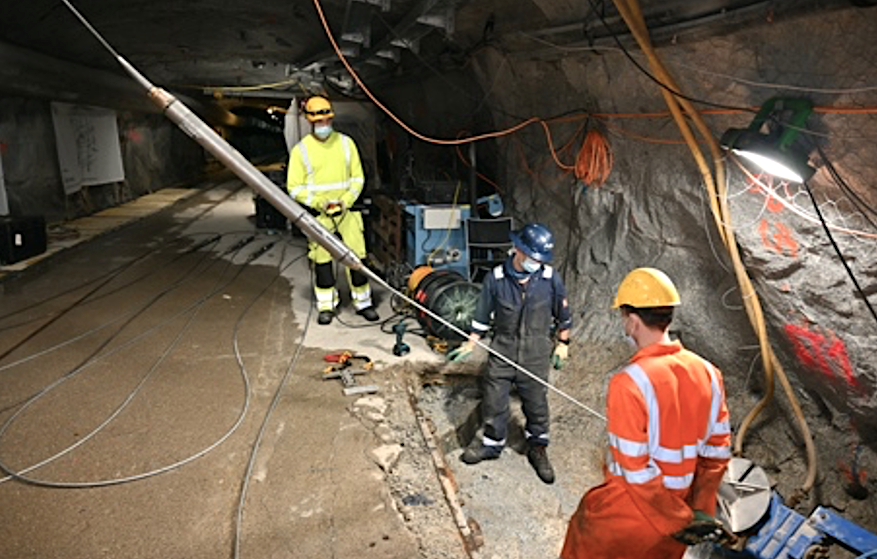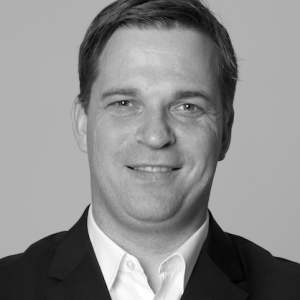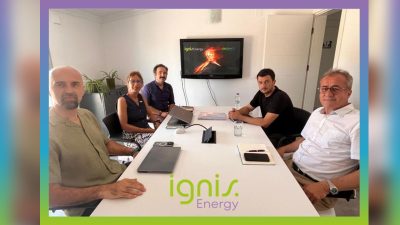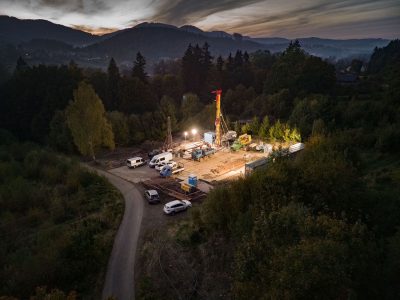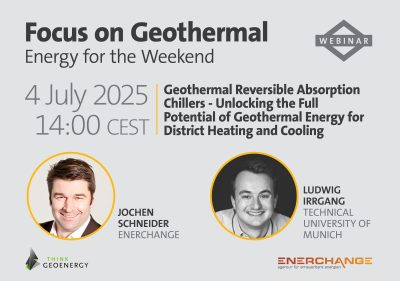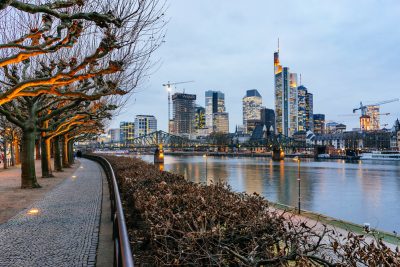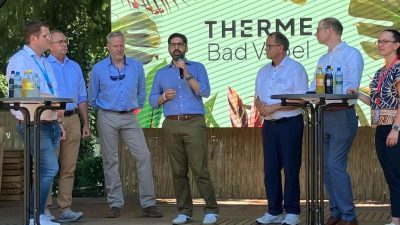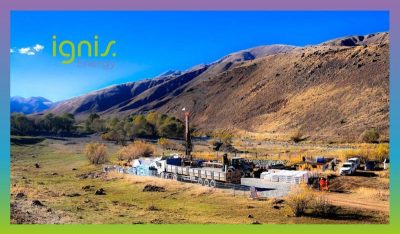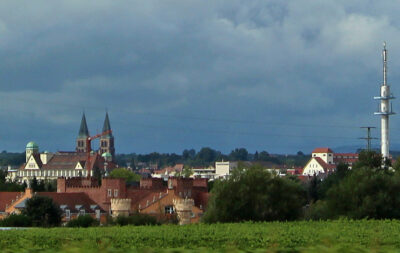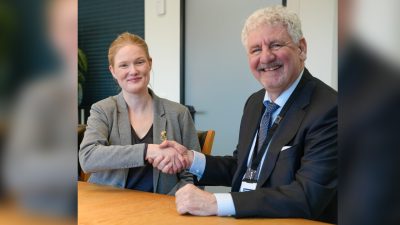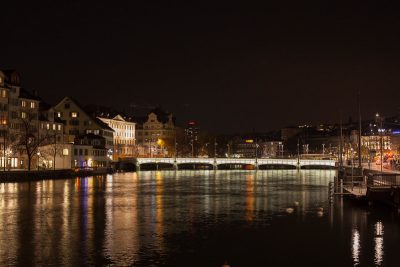Successful proof of new patented multi-stage geothermal stimulation concept in Switzerland
Geo-Energie Suisse succeeded in creating a permeable geothermal reservoir in the granite of the Gotthard massif In the Bedretto Laboratory of ETH Zurich, a breakthrough and technical proof for the company's patented multi-stage geothermal stimulation concept.
In a breakthrough for deep geothermal, and announced today, Switzerland-based Geo-Energie Suisse (GES) announced having succeeded in obtaining technical proof of the multi-stage stimulation concept patented by the company. The successful demonstration took place in the Bedretto Underground laboratory for Geosciences and Geoenergy of the ETH Zurich in the Canton Ticino in late 2020. Geo-Energie Suisse hopes that the achievement in the Gotthard massif will give new impetus to the pilot project in Haute-Sorne (JU) and to the production of electricity and heat from geothermal energy throughout Switzerland.
The potential of geothermal energy as a renewable, climate-neutral energy source is undisputed. The natural heat in the earth’s crust produces no CO2 emissions and provides constant thermal energy that can be used for electricity production or directly as a heat source. In addition, a geothermal power plant has a negligible impact on the landscape, as it takes up very little ground area. At present, however, there is one central challenge that must be overcome if geothermal heat is to be used economically as a renewable source of electricity on a large scale: that is the reliable and location-independent development beyond geothermal hotspots, such as those in Iceland, Indonesia or New Zealand.
With the support of the Werner Siemens Foundation, ETH Zurich has established a new research infrastructure to investigate such questions. In the «Bedretto Underground Laboratory for Geoenergies», ETH Zurich studies in close collaboration with national and international partners, techniques and procedures for a safe, efficient, and sustainable use of geothermal heat. GES demonstrated as an external partner in the Bedretto Laboratory within the framework of the DESTRESS, ZoDrEx and IASS projects how a heat exchanger can be carefully created in the underground.
Switzerland’s first proof of the multi-stage stimulation concept patented by GES.
In Basel, in 2006, an attempt was carried out to create a geothermal reservoir in a single step with a vertical, open borehole. However, the hydraulic stimulations triggered unacceptable earthquakes. In response to the technical challenge of safe reservoir development, Geo-Energie Suisse AG developed the multi-stage stimulation concept and patented it for Switzerland in 2012. The concept provides for the formation of a permeable reservoir in the crystalline basement at the depth of 4 to 5 kilometres required for electricity production by means of targeted water injections. To minimise the associated seismic risk, the hydraulic stimulation is carried out in sections and in small, staggered steps. A sequence of reservoir sections is generated along a horizontally drilled borehole. These are connected with a second, horizontally deviated borehole. The result is a large underground heat exchanger that can be used to produce electricity and extract heat in a geothermal power plant. Geo-Energie Suisse has now been able to prove for the first time that this multi-stage stimulation concept works in Switzerland, in the Bedretto Laboratory of ETH Zurich.
Milestone for the use of deep geothermal energy in Switzerland
«We succeeded in increasing the permeability by a factor of 10 to 100 in the compact granite of the Gotthard massif with the help of targeted stimulations, and in measuring and controlling the microseismicity necessary for the development of fissures,» explains Dr Peter Meier, CEO of Geo-Energie Suisse AG, and adds: «I am convinced that this breakthrough is a key milestone on the way to the first deep geothermal power plant in Switzerland. On the one hand, this is because the permeability achieved in one of the two boreholes corresponds to the transmissivity required for an economic application. On the other hand, and this is central, the microseismicity associated with the stimulations produced a maximum magnitude of -1.8 Mw on the Richter scale which is around 1 million times smaller than in Basel.» GES achieved this success within the framework of demonstration and innovation projects with the participation of national and international partners (see text box). The next step is the scientific evaluation by ETH Zurich, EPFL and the University of Neuchâtel. The evaluation will form the basis for the future, detailed stimulation programme of the Geo-Energie Suisse pilot project at the site in Haute-Sorne in the canton of Jura. Another successfully achieved interim goal of GES was the qualification and validation of newly developed technical components that are relevant for safety or more economical for the construction of the deep geothermal reservoir. Further qualification and validation work is planned for 2021, 2022 and 2023.
International cooperation as the key to reliability and further development of innovations
As an industrial partner, GES will additionally validate the findings gained in the Bedretto Laboratory at the US test site FORGE Utah (Frontier Observatory for Research in Geothermal Energy) in the high-temperature range. The focus there lies on the use of seismic sensors to control the induced microseismicity and steer the development – a key element for the safe stimulation of the deep underground. This is another step to increase the chances of success and the safety for Switzerland’s first deep geothermal pilot project in Haute-Sorne in the canton of Jura, and to foster the use of deep geothermal energy in Switzerland.
Achievement in Bedretto brings new impetus for the pilot project in Haute-Sorne
At the end of June 2020, the Swiss Federal Office of Energy increased the exploration grant for the deep geothermal project in Haute-Sorne by one third (see SFOE media release). With this grant, the Confederation is supporting additional measures for the Haute Sorne project that will further reduce the risk of damaging earthquakes on the recommendation of the Swiss Seismological Service (SED) at the ETH Zurich. Corresponding instruments and methods were successfully tested and their effectiveness demonstrated within the framework of the demonstration project in the Bedretto Laboratory. This progress could be decisive for the pilot project in Haute-Sorne. «We hope that the breakthrough in Bedretto will strengthen the confidence of the Jura Government and its supervisory authorities in the safety concept for the Haute-Sorne pilot project and that we will be able to start preparations for the exploratory well before the end of 2021,» says Peter Meier.
Geo-Energie Suisse remains committed to a step-by-step approach towards the pilot project in Haute-Sorne and is convinced that the experience gained so far in the Bedretto Laboratory, the future findings in Utah and the additional support from the SFOE will place the project in Haute-Sorne at the forefront of safety. With the successfully implemented demonstration project in the Bedretto Laboratory, the hope that the future of the production of renewable, CO2-free and clean electricity from deep underground will begin in the canton of Jura has been given new impetus. According to Peter Meier, «these innovations and results will serve Swiss energy and climate policy and the entire emerging geothermal industry».
Key results at a glance
- In the Bedretto Laboratory of ETH Zurich Geo-Energie Suisse succeeded in creating a permeable geothermal reservoir in the granite of the Gotthard massif from two boreholes, 350 and 400 metres long respectively. For this purpose, 10 isolated borehole sections were hydraulically stimulated in consecutive stages.
- The microseismicity induced by the stimulations, with magnitudes (Mw) ranging between -3.3 and -1.8 Mw, was about 1 million times smaller than the earthquake that led to the abandonment of the Basel geothermal project in 2006. spatial distribution of the microseismicity / temporal evolution of the microseismicity (2 videos)
- Innovative sensors, measurement and control techniques were tested for the first time and enabled the observation and control of the hydraulic stimulations. These techniques increase safety when creating geothermal reservoirs in crystalline rock. In addition, a seismicity forecasting method, developed by ETH Zurich, was also successfully implemented in the demonstration project. Figure
- A maximum of 100 cubic metres of water were injected per stimulation interval according to a pre-prepared risk study. In this way, the radial extent of the stimulated fracture system could be limited in order to keep the seismicity low. Despite the low injection volume (about 120 times less than in Basel), the permeability of the stimulated intervals could be increased on average by about one to two orders of magnitude (a factor of 10 to 100).
- The enhanced permeability of one of the two boreholes (transmissivity > 1e-4 m2/s) would be sufficiently high for an economic application in a deep geothermal project. Video.
- The stimulated area of the wells in the Bedretto Laboratory is located at a depth of 1400 metres below surface. This corresponds to slightly less than one third of the targeted reservoir depth in Haute-Sorne (4000 – 5000 metres). The minimum rock stress in the Bedretto Laboratory is about a quarter of the stress measured in Basel at a depth of 5000 metres. The natural fracture permeabilities at Bedretto (before stimulation) are in the range of those of the crystalline basement of north-eastern Switzerland as measured in Nagra’s deep boreholes in the frame of the crystalline programme of the 1980s.
- The borehole diameter (22 cm) corresponds to that of the pilot project planned by Geo-Energie Suisse in Haute-Sorne, and its length is approximately one third of Haute-Sorne. The experience in the Bedretto Laboratory shows that strongly deviated or horizontal boreholes in granite are also technically and economically feasible.
- In March / April 2021, the reservoir is to be expanded by means of a larger injection volume.
- The achievement of the demonstration project is the result of national and international innovation cooperation and serves the entire Swiss geothermal industry to increase the safety and probability of success of future projects.
Project partnerships:
- DESTRESS Demonstration of soft stimulation treatments of geothermal reservoirs – www.destress-h2020.eu/en/demonstration-sites/bedretto , funded by the State Secretariat for Education, Research and Innovation (SBFI) under contract numbers 15.0316-1, 691728.
- ZoDrEx Zonal Isolation, Drilling & Exploitation – www.geothermica.eu/projects/zodrex , financed by the Swiss Federal Office of Energy (SFOE).
- IASS Innovative Acquisition Systems and Software for Deep Geothermal Evaluation and Monitoring – in collaboration with Utah FORGE www.utahforge.com, financed by the Swiss Federal Office of Energy (SFOE).
Source: release by email
Picture Note: Installation of a seismometer chain in borehole ST1 to monitor the stimulations in borehole ST2, at the Bedretto Laboratory of ETH Zurich. The work was carried out under the direction of Geo-Energie Suisse (source/ copyright: Geo-Energie Suisse)
